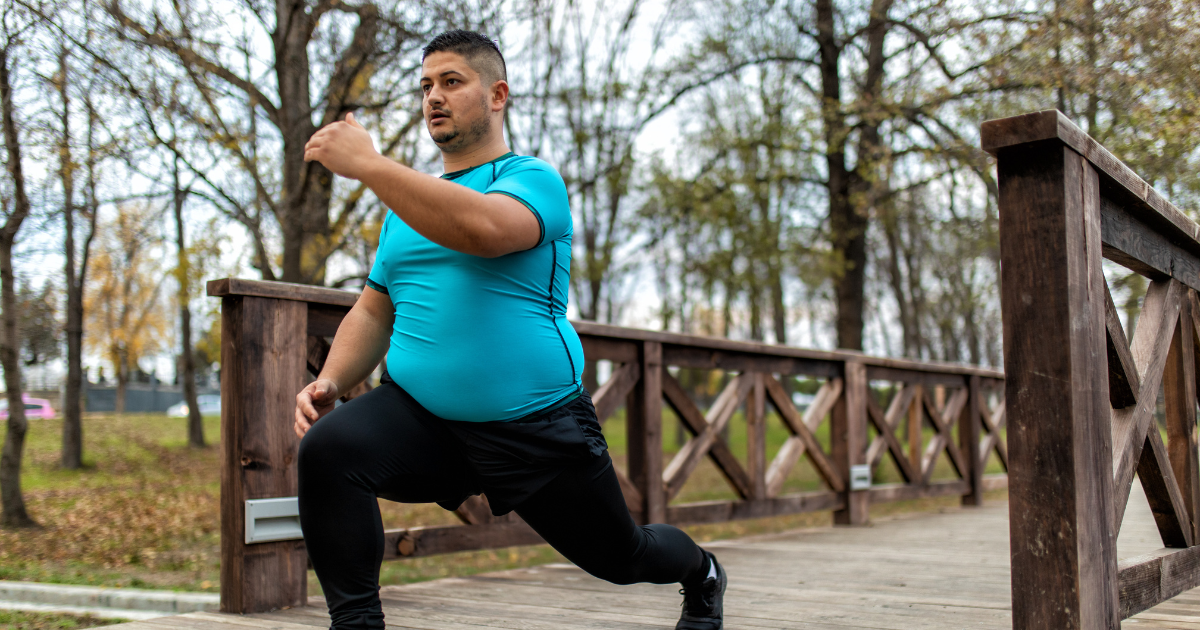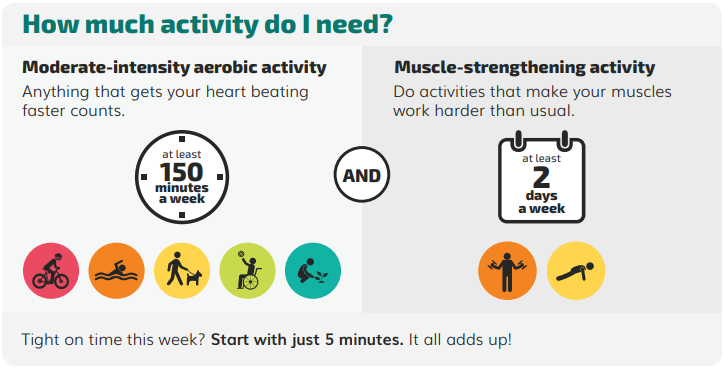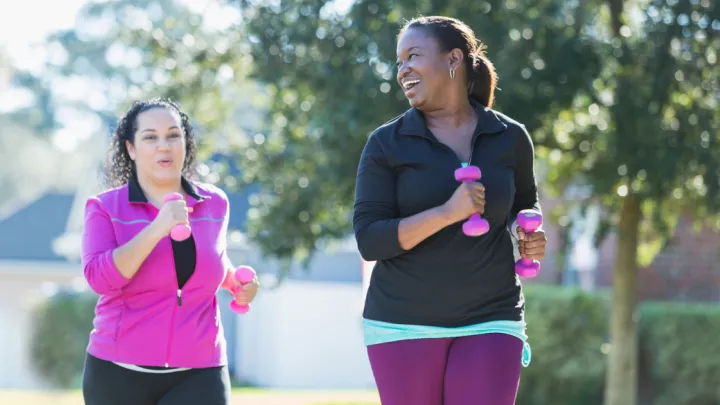How to start a simple exercise routine: 5 tips for beginners

Are you thinking about starting an exercise routine for the first time or want to reengage after a long hiatus? The sheer number of exercise options can be overwhelming, and leaping from thinking to action may be the biggest step.
Undoubtedly, staying active increases your health and well-being in numerous ways, including lowering disease risk, increasing cognitive function and boosting mental health. But according to the Centers for Disease Control and Prevention, only half of U.S. adults get the physical activity they need to help reduce and prevent chronic diseases.
Kicking off an exercise routine begins with planning, a positive mindset and practical application. Brett Woslager, Nebraska Medicine physical therapist and certified strength and conditioning specialist, shares five beginner tips.
1. Determine your “why.”
Think about your motivation to begin exercising. There are many good reasons, but what is it for you?
Perhaps you want to reduce your disease risk, increase your heart health, lose weight or get better sleep. Maybe you want to be able to keep up with your grandkids or maintain your strength and balance. Or, you might want to continue playing that sport you’ve loved since high school or take more challenging nature hikes with a loved one.
Whatever your motivation, determining your “why” will help you stick to it when you get tired or feel like quitting.
2. Set personal fitness goals.
Set reasonable, measurable goals that give you something to shoot for as you progress. Pushing yourself too hard too quickly is a good formula for discouragement. Instead, set goals that you can attain and build on over time.
Remember, some exercise is better than no exercise at all. Start small, get your body moving and work towards that first goal. As you get stronger, work up to more challenging exercises and set new goals.
3. Establish an exercise routine that works for you.
What exercise routine will work with your lifestyle and help you reach your goals? Choose activities and exercises that you enjoy and match your current physical abilities so you’ll be more likely to stick with them.
Exercise and recovery day recommendations
- Exercise three to four days per week with rest days in between
- On rest days, walking, stretching or doing low-level maintenance exercises is OK
- Start with low-intensity workouts and work your way up in duration and repetitions
- Choose a time of day that works for your schedule
Cardio, aerobic, core, strength, intensity – how do I know what to do?
Start small. “Your goals will help determine when you work in cardio and strength training, but if you’re working on general wellness, it’s OK to combine several into one exercise session,” says Woslager. “A knowledgeable personal trainer is helpful for accountability, tracking progress, and tailoring your workout routine to fit your goals.”
Listen to your body and build in rest days
The old saying “no pain, no gain” is not a good guide. Avoid going too hard or fast, especially if it’s been some time since you worked out regularly. Some soreness is normal after a workout for 24 to 48 hours, but if you’re feeling pain after that, listen to your body and see a doctor about ongoing joint or tendon pain.
“Rest days are an overlooked piece of the puzzle,” adds Woslager. “The exercise isn’t what makes you stronger, it’s the stimulus put into your body, and those rest periods are when you have the opportunity to put better and stronger tissue into place.”
See the CDC’s recommendations for physical activity by age group, including pregnant or postpartum adults and those with chronic conditions or disabilities.
If you have a pre-existing medical condition, talk with your doctor before starting a new exercise routine.
4. Measure fitness and track progress using physical assessment tools
Whether you plan to work with a personal trainer or want to exercise independently, it’s important to measure your fitness level regularly. Assessments will identify a starting point, help you set reasonable goals, and track your progress.
How do I know if I’m making progress?
Perceived exertion is how hard you feel like your body is working. The Borg Rating of Perceived Exertion scale measures the intensity level of physical activity, including heart rate, breathing rate, sweating and fatigue.
As you learn to monitor how your body feels over time, it will become easier to know when to adjust your intensity level.
In addition, find a baseline and continue to measure your fitness level in each area, including:
- Aerobic fitness – use the 12-minute walk or run test (how far you can go in 12 minutes) or how long it takes you to walk or run a mile. Measure your heart rate and estimate your target heart rate zone during exercise.
- Muscular strength and endurance – try the pushup or situp test if you don’t have weight equipment or determine how much weight to safely lift by using the one rep max or equivalent
- Flexibility – try the sit-and-reach test
- Body composition – calculate your body mass index (BMI)
Additional resources:
Make tracking easier with fitness tech
Numerous tech tools are on the market to track data, such as fitness tracker apps, wearable bands and watches. Fitness tools can help you stay accountable, measure progress and even remind you to get up and move around.
5. Focus on building a long-term lifestyle
Think of your exercise routine as a life-long journey rather than a short-term sprint. When it gets difficult, and your motivation is low, remind yourself of your “why” and adjust accordingly.
“Remember, this is a lifestyle shift as opposed to a short-term fix,” says Woslager. “Resist the urge to judge yourself if you feel you should be further along than you are. It’s a gradual process that takes time, and it should if it’s going to last. It doesn’t need to be about six-pack abs to have it matter. It’s more about preparing our bodies to do the things we care about in life. That’s a worthwhile goal to pursue.”








